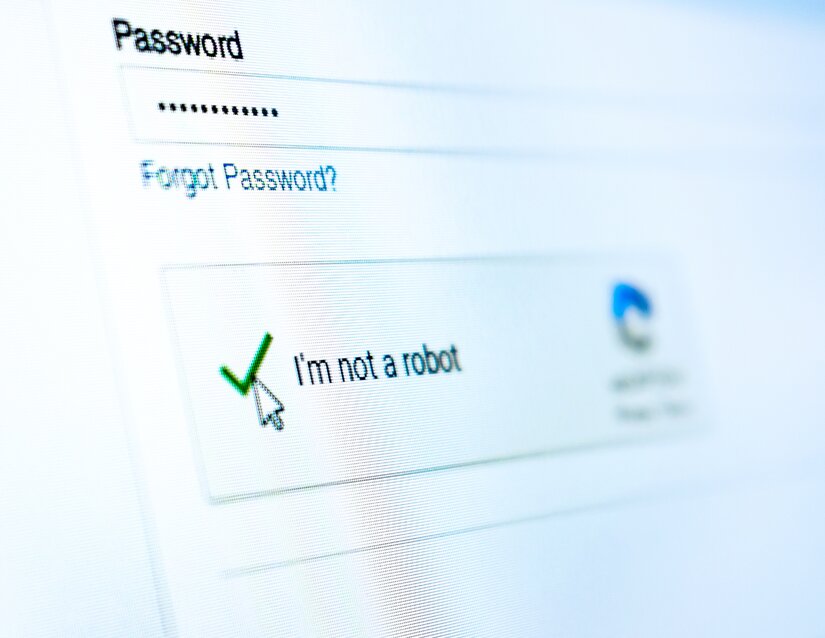 In today's digital world, cybercriminals are constantly evolving their tactics, using new and deceptive tricks to gain access to sensitive healthcare data. One emerging threat? Fake CAPTCHA scams—particularly a new technique called ClickFix—a sneaky social engineering tactic that disguises malware as a routine security check.
In today's digital world, cybercriminals are constantly evolving their tactics, using new and deceptive tricks to gain access to sensitive healthcare data. One emerging threat? Fake CAPTCHA scams—particularly a new technique called ClickFix—a sneaky social engineering tactic that disguises malware as a routine security check.
If you think CAPTCHA tests are always a sign of a secure website, think again. Hackers are now using fake CAPTCHA pages to trick users into executing malicious code, installing malware, or exposing sensitive information. Here's what you need to know to keep your skilled nursing facility or senior living community safe.
How Fake CAPTCHA Scams Work: The ClickFix Technique
Normally, CAPTCHA tests are used to verify that a user is human and prevent bots from accessing websites. You've probably seen them asking you to check a box that says "I'm not a robot" or select images of traffic lights and crosswalks.
Cybercriminals, however, are exploiting this familiar security tool to launch sophisticated phishing attacks. A recent technique called ClickFix, first observed in May 2024, has become increasingly common in malware distribution campaigns. Here's how it works:
- Initial Contact: The attack begins with a convincing phishing email that appears to be from a legitimate company. In recent campaigns, attackers have impersonated travel companies like Booking.com, but healthcare providers have also been targeted through emails impersonating medical suppliers, insurance companies, or regulatory bodies.
- Website Redirection: When users click links in these emails, they're redirected through a series of websites, eventually landing on a page with what appears to be a legitimate Cloudflare CAPTCHA.
- The Fake CAPTCHA Trap: After passing the first CAPTCHA, users see another verification screen with an "I'm not a robot" checkbox. This is where the attack happens:
- When users click this checkbox, malicious JavaScript code silently copies commands to their clipboard
- Users are instructed to press Win+R (opening the Run dialog) and paste the content
- The pasted content includes hidden commands disguised with text like "✅ I am not a robot — reCAPTCHA VerifID: 52794"
- Malware Execution: When executed, these commands:
- Download and execute disguised malware (often masquerading as image files like .jpg)
- Use sophisticated techniques to avoid detection (like reflective loading that doesn't write to disk)
- Install persistent malware that remains even after system restarts
- Connect to remote command and control servers
For healthcare organizations—where HIPAA compliance, patient safety, and data security are paramount—falling for these scams could be catastrophic. Recent ClickFix campaigns have deployed Remote Access Trojans (RATs) and information stealers that can compromise electronic health records and sensitive patient data.
Signs of a Fake CAPTCHA Scam
Cybercriminals rely on deception, but there are red flags that can help you spot a fake CAPTCHA:
- Unexpected CAPTCHA prompts – If a CAPTCHA appears on a site that wouldn't normally need one (like a patient portal login or healthcare provider directory), proceed with caution.
- Multiple redirects – Recent ClickFix campaigns redirect users through several domains before showing the fake CAPTCHA. If you notice your browser jumping through different websites, that's a warning sign.
- Requests to use keyboard shortcuts – Legitimate CAPTCHAs never ask you to press Win+R or paste content into the Run dialog. This is a major red flag.
- Multiple verification steps – Be suspicious of sites that make you complete multiple CAPTCHA verifications in sequence.
- Unusual URLs – Check if the website URL matches the legitimate company. For example, instead of "medicare.gov," you might see something like "medicare-portal.someotherdomain.com."
The Technical Impact: Why Healthcare Facilities Are at Risk
When a ClickFix attack is successful, the consequences can be severe for skilled nursing facilities and senior living communities:
- Registry Manipulation: The malware creates hidden registry entries that launch malicious code each time your system starts, making it difficult to detect and remove.
- Remote Access: Attackers gain complete control over infected systems through RATs like Xworm, potentially accessing:
- Electronic Health Records (EHR) and Protected Health Information (PHI)
- Medication management systems
- Resident/patient billing information
- Staff scheduling and payroll systems
- Security and monitoring systems for resident safety
- Data Exfiltration: Information stealers can harvest credentials and sensitive information, including:
- Patient medical records and histories
- Insurance and Medicare/Medicaid information
- Staff credentials that could lead to further system access
- Financial data for both residents and the facility
- Regulatory Compliance Violations: A breach could put you in violation of HIPAA and other healthcare regulations, potentially resulting in:
- Substantial financial penalties
- Mandatory breach notifications
- Loss of accreditation or certification
- Damage to reputation and resident trust
How to Protect Your Healthcare Facility from CAPTCHA Scams
Your healthcare operation—whether a skilled nursing facility, rehabilitation center, or senior living community—relies on secure digital systems for patient care, documentation, and regulatory compliance. A single cybersecurity breach can put your patients' data, operational continuity, and regulatory standing at risk.
Here's how to stay safe:
✔ Implement specific email security measures:
- Use email filtering solutions that can detect phishing attempts
- Be wary of unexpected emails claiming to be from healthcare regulators, insurance providers, or medical suppliers
- Hover over links before clicking to verify destinations
✔ Train clinical and administrative staff on the specific ClickFix technique:
- Never use Win+R or paste content when prompted by a website
- Be suspicious of any site asking you to paste content into system dialogs
- Report suspicious emails or websites to your IT team immediately
✔ Deploy multi-layered technical defenses:
- Domain filtering to block connections to known malicious domains
- Process monitoring to detect suspicious execution chains (like mshta.exe launching PowerShell)
- Script execution policies to prevent unauthorized PowerShell commands
- Registry monitoring to detect unauthorized modifications
✔ Regular security assessments:
- Conduct periodic HIPAA security risk assessments that include social engineering vulnerabilities
- Test your employees with simulated phishing campaigns that include fake CAPTCHA scenarios
- Review system logs for signs of suspicious activities, especially around EHR access
✔ Healthcare-specific security considerations:
- Isolate clinical workstations from general internet browsing
- Use separate networks for resident/patient care systems and administrative functions
- Apply the principle of least privilege for all healthcare software access
- Ensure all systems containing PHI have appropriate access controls and encryption
Final Thoughts: Stay Cyber-Savvy in Post-Acute Healthcare
As cyber threats continue to evolve, healthcare facilities need to stay one step ahead. Fake CAPTCHA scams like ClickFix are just one example of how hackers manipulate common security tools to exploit unsuspecting users.
What makes these attacks particularly dangerous for healthcare organizations is the combination of highly sensitive patient data and strict regulatory requirements that make any breach especially costly. A single compromised system could potentially expose your entire facility to:
- HIPAA violations and substantial financial penalties
- Disruption to patient care systems and clinical workflows
- Mandatory breach notifications that damage resident and family trust
- Potential impacts on quality ratings and accreditation
At Silver Linings Technology, we specialize in securing healthcare facilities from cyber threats, helping you stay compliant, protected, and focused on providing quality care. Our security solutions are specifically designed to address the unique challenges faced by skilled nursing facilities and senior living communities, including protection against emerging threats like ClickFix.
Need help securing your healthcare facility? Contact Silver Linings Technology today and let's keep your residents' data and critical systems safe from cybercriminals!


